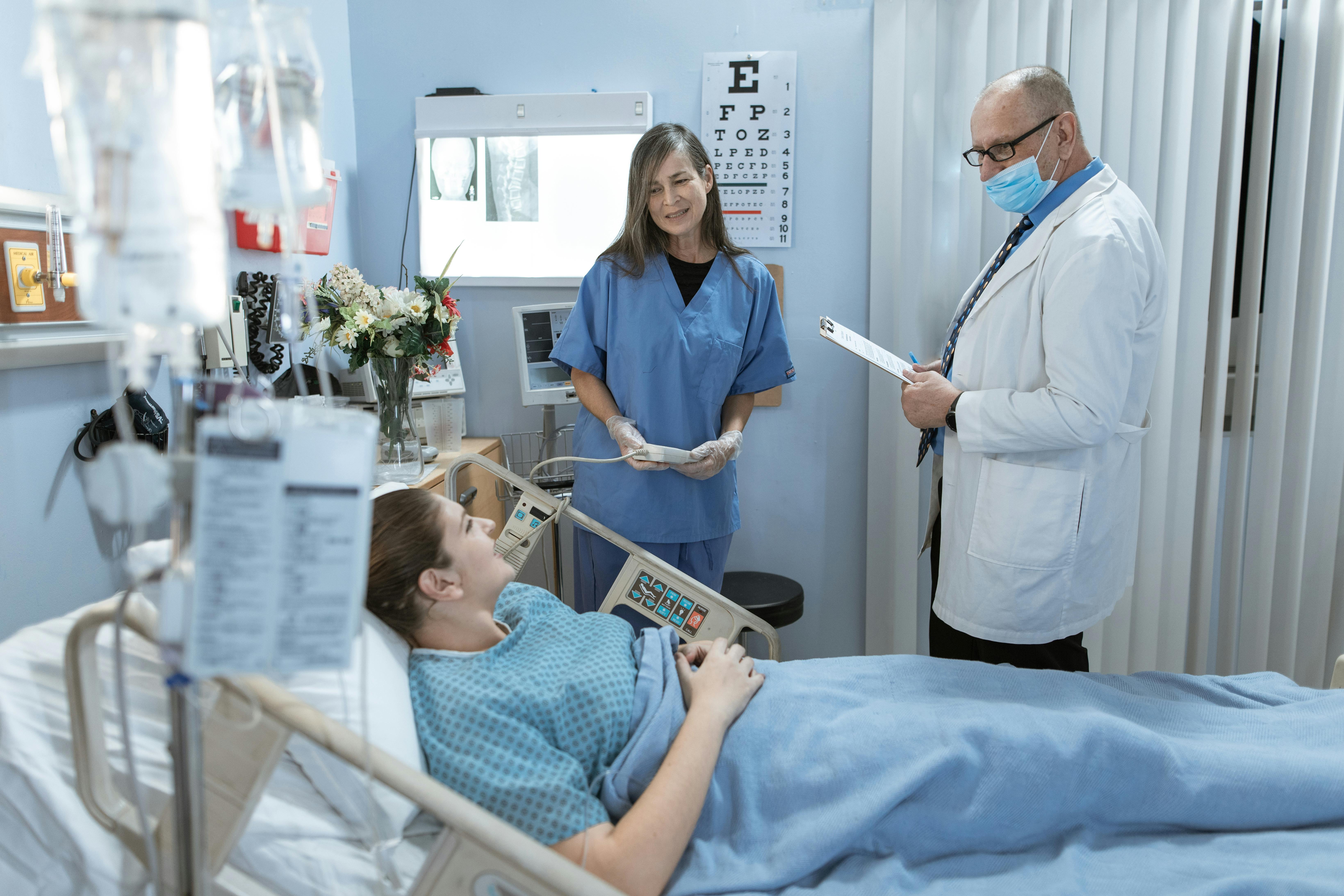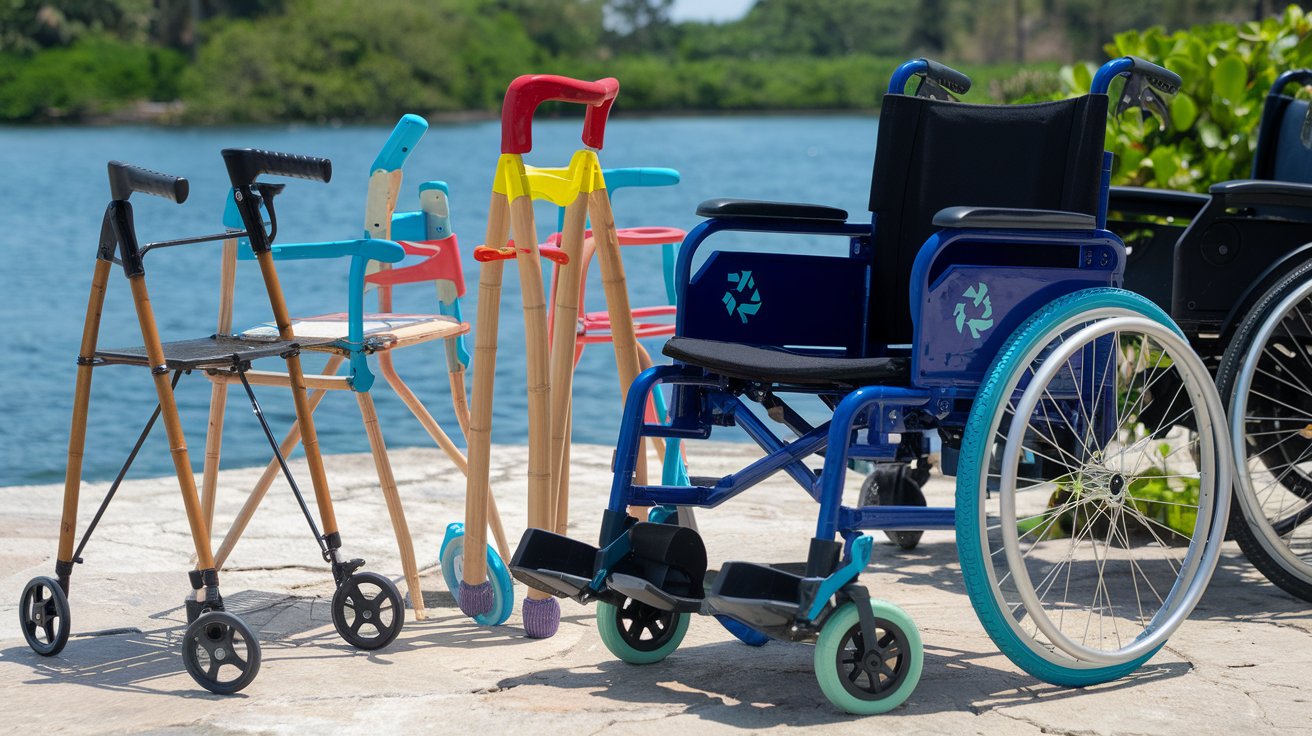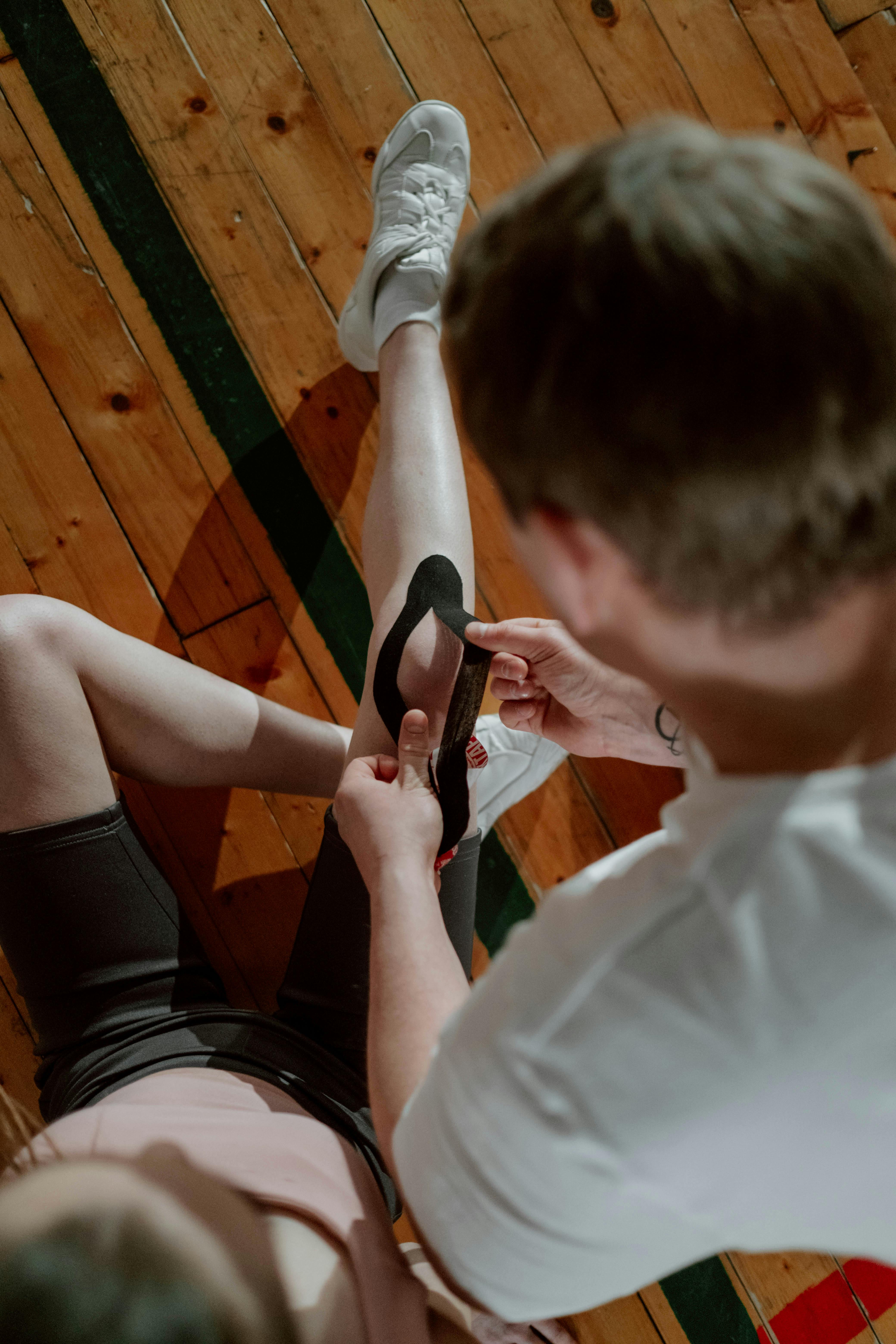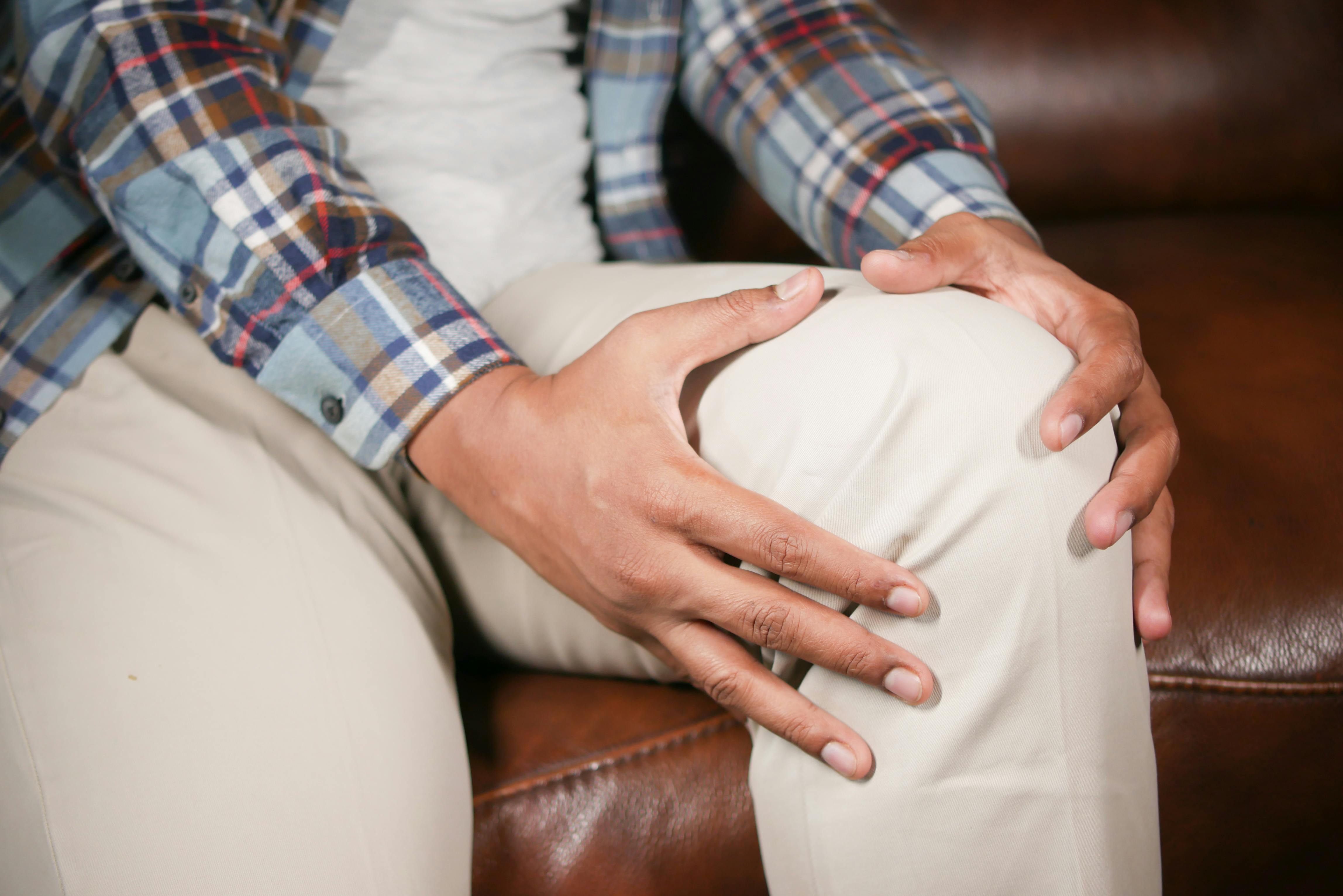Knee Replacement Discharge Instructions ( Detailed Info)

After your knee replacement surgery, it's important to understand how your new knee works. The knee joint, where your thigh bone, shin bone, and knee cap meet, has been replaced with an artificial joint called a knee prosthesis.
This surgery was done to relieve the pain and stiffness you were experiencing and to help you move more freely.
As you recover at home, there are some important instructions to follow:
Table of Contents
General Precautions
Here are some important general precautions to keep in mind as you recover:
- Use Assistive Devices: If you feel weak or unsteady, it's okay to continue using a walker, crutches, or a cane for support.
- Be Cautious on Stairs: If you're nervous about navigating stairs, try using a sitting position to go up and down, or ask for assistance if needed.
- Elevate Your Leg: Keeping your leg elevated whenever possible helps reduce swelling. Aim to keep your knee and leg higher than the level of your heart to promote better circulation and decrease swelling.
- Expect Some Swelling: While most swelling decreases in the first few weeks after surgery, some may linger for a few months. This is normal, so don't be alarmed.
- Use Ice Packs: To help manage swelling, you can use ice or cold packs on your knee during the first couple of weeks after surgery. Remember to place a cloth between the ice pack and your skin, and limit icing sessions to 20 minutes at a time with 20-minute breaks in between.
These are general rules and you should always check with your surgeon or his medical assistant if you have any questions.
Wound Care Precautions
Feel free to take a shower right after your surgery as long as the dressing is still intact. You can keep the dressing on until you visit the office, but avoid fully submerging it in water. If the dressing loses its seal or gets wet, it's best to remove and discard it.
Your comfort and cleanliness are important during your recovery, so don't hesitate to ask if you have any questions or concerns about caring for your incision.
Sitting and Sleeping Precautions
Here are some helpful tips for sitting and resting comfortably during your recovery:
- Choose chairs with armrests to make standing up and sitting down easier and more stable.
- Try not to sit for extended periods; aim to change your position every 30 to 45 minutes to prevent stiffness and promote circulation.
- If you're feeling tired, it's okay to take naps, but avoid spending the entire day in bed. Finding a balance between rest and gentle activity can help with your recovery.
- When sleeping, place a pillow under your ankle for support rather than under your knee. Additionally, remember to adjust the position of your leg throughout the night to avoid stiffness and discomfort.
Taking care of yourself during this time is crucial for a smooth recovery. If you have any questions or need further assistance, don't hesitate to reach out to your healthcare provider.
Pain Management Instructions
As you transition home from the hospital, it's important to gradually reduce your reliance on pain medication while still managing your discomfort effectively:
- While we can't eliminate your pain entirely, our goal is to help you manage it so you can resume your daily activities and physical therapy.
- Begin extending the time between doses of pain medication. For instance, if you were taking medication every 2 hours, try spacing them out to every 3 hours, then gradually increase the intervals.
- By the two-week mark post-surgery, aim to only use prescribed pain medication before physical therapy sessions and at bedtime.
- Ideally, you should no longer require prescribed pain medication by six weeks after your surgery.
- Once you've stopped taking blood thinners like Rivaroxaban, Lovenox, Arixtra, or Aspirin, it's safe to introduce Ibuprofen for pain relief. You can take Ibuprofen during the day and reserve your prescribed pain medication for nighttime and therapy sessions.
Managing pain during your recovery is a gradual process, and we're here to support you every step of the way.
Nutritional Instructions
During your recovery, it's important to prioritize hydration and nourishment with a balanced diet. Avoid restricting your calorie intake or following any strict diets during the first six weeks after surgery.
Your body needs sufficient calories and protein to heal properly, so focus on eating well-rounded meals. Incorporating foods rich in protein can support faster healing and recovery.
Remember to drink plenty of fluids to stay hydrated, as this also aids in the healing process. Taking care of your nutritional needs will contribute to your overall well-being and help you on the path to a smoother recovery.
If you have any dietary concerns or questions, don't hesitate to discuss them with your healthcare provider or a nutritionist.
Walking Precautions
Walking is a key part of your recovery process, and we recommend aiming for at least six short walks each day, starting with 5 to 10 minutes each time.
Gradually, you'll be able to increase the duration of your walks, but it's important to avoid overexertion and swelling in the first few weeks.
Remember, walking isn't just about exercise—it also helps prevent issues like constipation and blood clots. Short, frequent walks are more beneficial than a few longer ones.
You can put full weight on your operated leg unless your healthcare provider advises otherwise. When climbing stairs, lead with your non-operated leg, and when descending, lead with your operated leg for added stability.
If you still have a limp while walking, continue using a cane for support. Hold the cane in the hand opposite to your operated knee to provide better balance and assistance.
By incorporating these walking tips into your daily routine, you'll promote healing and regain strength gradually. If you have any concerns or questions about your walking routine, don't hesitate to reach out to your healthcare provider for guidance.
Physical Therapy Precautions
For most patients, the aim is to return directly home after surgery. A therapist will visit you at home several times each week to assist with your recovery.
Once you're comfortable riding in a car, you can transition to outpatient physical therapy. Simply reach out to the office, and if needed, a prescription for outpatient therapy can be arranged.
During the initial three weeks, our goal is to achieve full extension of the knee and a bending capability of at least 90 degrees. By the six-week mark, we aim for a bending range of at least 120 degrees, provided there were no significant limitations in motion prior to surgery.
We're committed to supporting you throughout your recovery journey, whether at home or during outpatient therapy sessions. If you have any questions or concerns about your progress, please don't hesitate to reach out to our team for assistance.
Exercise Precautions
Your exercise routine isn't just for now—it's a continuous part of managing your knee replacement for the long term. Many patients experience improvements in strength, stamina, and endurance for up to a year after surgery.
To prevent stiffness, it's crucial to keep your knee moving regularly. Aim to bend your knee back and forth frequently throughout the day, striving for around a thousand repetitions daily.
One beneficial exercise is heel slides: simply bend your knee and hip, allowing your heel to slide outwards. This gentle movement helps maintain flexibility and mobility in your knee joint.
By staying committed to your exercise program, you're actively contributing to your ongoing recovery and overall well-being.
If you have any questions about your exercises or need additional guidance, feel free to reach out to your healthcare provider or physical therapist for support.
Driving Precautions
After your discharge, you're welcome to take short rides as a passenger if you're feeling up to it. However, it's advisable to avoid long car trips (over an hour) for the first six weeks after surgery if possible. If you must travel a longer distance, make sure to take breaks and get out of the car at least once an hour to stretch and move around.
Before driving in regular traffic, it's a good idea to test your driving skills in an empty parking lot to ensure you're comfortable and confident behind the wheel.
Typically, most patients are able to resume driving around 2 to 3 weeks after discharge if they were driving prior to surgery. However, it's essential to have good control of your right leg and not have any other conditions that may affect your ability to drive safely.
Your safety and comfort are our top priorities, so if you have any concerns or questions about driving after surgery, don't hesitate to discuss them with your healthcare provider.
Blood Clot Prevention
After surgery, most patients will be prescribed 81 mg of aspirin, to be taken twice daily, typically with breakfast and dinner, for 42 days. However, some patients with higher clot risk factors or those unable to take aspirin may be prescribed a stronger blood thinner like Lovenox.
If patients were already taking a blood thinner pre-surgery for conditions such as atrial fibrillation, they'll likely resume their previous medication instead of aspirin.
During the initial week post-surgery, it's important to avoid prolonged periods of immobility, such as sitting for over 45 minutes, to prevent leg swelling.
When not walking or exercising, patients should lie down with their legs elevated to reduce swelling. Additionally, doing ankle pumps can help prevent blood clots during this time.
Your health and safety are paramount, so if you have any concerns or questions about your medication or post-surgery activities, don't hesitate to reach out to your healthcare provider for guidance.
Other Precautions
It's important to inform all your healthcare providers, including your dentist, about your artificial joint before any procedure. Antibiotics may be necessary before dental work and other medical procedures to reduce the risk of infection.
To create a safe environment at home, arrange your household to keep essential items easily accessible while removing potential hazards like throw rugs and electrical cords that could cause falls.
Equip your bathroom with non-slip bath mats, grab bars, an elevated toilet seat, and a shower chair for added safety.
Keep your hands free by using practical carrying solutions like a backpack, fanny pack, apron, or pockets.
Preventing infection is paramount. If you haven't already received instructions, ask your doctor for guidance. Prompt treatment with antibiotics is crucial if any signs of infection arise.
Maintaining a healthy weight is essential, as excess body weight can strain your knee. Seek assistance if needed to lose any extra pounds.
Follow your post-surgery medication regimen diligently, which may include blood thinners to prevent blood clots or antibiotics to stave off infection. Ensure you complete the full course of antibiotics as prescribed.
Your well-being is our priority, so if you have any questions or concerns, don't hesitate to reach out to your healthcare provider for guidance and support.
Also read How to prevent knee sprains (Guidelines)
Follow Up Instructions
Make sure to keep track of your post-operative appointments, which are typically scheduled for around 2 to 3 weeks and 8 weeks after your surgery. During your 8-week visit, you'll undergo an x-ray to check on your progress and ensure everything is healing as expected.
These follow-up appointments are crucial for monitoring your recovery and addressing any concerns you may have along the way.
If you have any questions or need to reschedule your appointments, don't hesitate to reach out to your healthcare provider's office for assistance. Your well-being is our top priority, and we're here to support you every step of the way.
Hope you found this article helpful! If you're interested, there's more valuable information available for you to explore. Delving deeper into related topics can provide additional insights and guidance to support you on your journey.
Whether it's learning more about recovery techniques, understanding your condition better, or exploring further resources, there's always more to discover.
If you have any questions or need further assistance, feel free to reach out. Your well-being is important, and we're here to help in any way we can.



